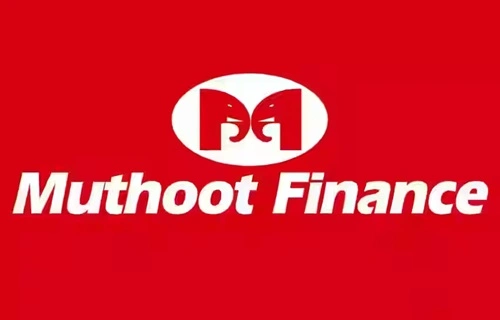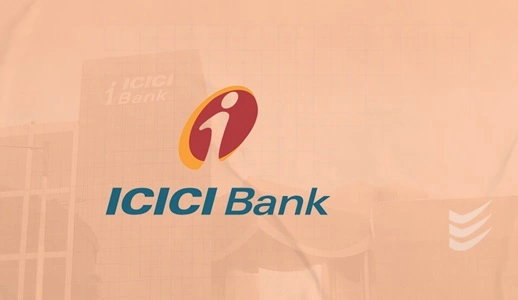Muthoot Finance, a flagship company of the Muthoot Group, is one of India’s largest gold loan NBFCs (Non-Banking Financial Companies). Established in 1939, it has grown into a trusted name in the financial services sector, especially for its gold-backed lending services. With a mission to provide quick, accessible, and secure loans, Muthoot Finance has played a pivotal role in catering to the financial needs of individuals and small businesses. This article explores Muthoot Finance’s business model and delves into how it generates revenue.
Overview of Muthoot Finance’s Business Model

Muthoot Finance operates on a loan-based financial services model, primarily offering secured loans against gold. Its business model focuses on leveraging India’s cultural affinity toward gold, which is often used as a household asset for securing emergency funds. The company’s offerings are structured around:
- Gold Loans: The core service, providing loans against the collateral of gold jewelry.
- Other Financial Services: Including personal loans, housing finance, microfinance, insurance, and foreign exchange services.
- Fee-Based Income: Earnings from additional services like insurance sales, money transfer, and mutual fund distribution.
The simplicity, accessibility, and speed of its services make Muthoot Finance a preferred choice for customers, especially in semi-urban and rural areas.
Revenue Streams
a) Gold Loans
Gold loans are the primary revenue driver for Muthoot Finance, contributing approximately 85%-90% of its total income. The process involves:
- Customers pledging their gold jewelry as collateral.
- Muthoot Finance offering loans based on the gold’s current market value, typically up to 75%-90% of its value.
Revenue Generation:
- Interest Income: Muthoot Finance earns interest on gold loans, with rates ranging between 12%-24% per annum, depending on the loan size and repayment tenure.
- Processing Fees: Borrowers are charged a nominal processing fee for availing of loans.
b) Non-Gold Loans
In addition to gold loans, Muthoot Finance offers various other lending products:
- Personal Loans: Unsecured loans offered to individuals.
- Housing Finance: Loans for home purchases, renovation, or construction through its subsidiary, Muthoot Homefin.
- Vehicle Loans: Loans for purchasing two-wheelers or commercial vehicles.
- Microfinance: Loans targeted at small businesses and rural households, offered through Muthoot Microfin Limited.
Revenue is generated through interest and processing fees for these loans.
c) Insurance and Wealth Products
Muthoot Finance acts as a distributor for financial products like:
- Insurance: Life, health, and general insurance policies.
- Mutual Funds: Investment options for customers seeking wealth creation.
Revenue Generation:
- Commissions: Muthoot Finance earns a percentage of the premium or investment value as commission from the respective insurance or mutual fund companies.
d) Foreign Exchange and Money Transfer Services
The company offers:
- Currency Exchange: Buying and selling foreign currency for travelers.
- Money Transfers: Domestic and international money transfer services.
Revenue Generation:
- Exchange Margins: Income from the difference between buying and selling foreign currencies.
- Transfer Fees: Commissions on remittance transactions.
e) Gold Sale
In cases where borrowers fail to repay loans, Muthoot Finance auctions the pledged gold to recover the loan amount. Any surplus amount, after deducting the loan balance and interest, is returned to the borrower.
Revenue Generation:
- Auctioning of gold provides a safety net to recover outstanding debts, while any gains from price appreciation of gold add to revenue.
f) Fee-Based Services
Muthoot Finance offers additional services such as:
- Locker Facilities: Renting out secure lockers for storing valuables.
- Advisory Services: Providing financial advice to customers.
- Bill Payments: Assisting customers with utility and bill payment services.
These fee-based services contribute to non-interest income.
Cost Structure
Running a financial institution like Muthoot Finance involves various costs:
a) Cost of Borrowing
Muthoot Finance borrows funds from banks, financial institutions, and the public (via non-convertible debentures or NCDs). The interest paid on these borrowings is a significant expense.
b) Employee and Administrative Costs
With over 5,000 branches, the company incurs expenses related to salaries, training, and administrative operations.
c) Technology and Infrastructure
Investments in digital platforms, security systems, and IT infrastructure ensure operational efficiency and customer satisfaction.
d) Marketing and Customer Acquisition
Muthoot Finance spends on advertisements, promotions, and branding to maintain its market leadership and attract new customers.
e) Loan Loss Provisions
The company sets aside provisions for potential loan defaults, ensuring financial stability.
Key Strategies Driving Revenue Growth
a) Focus on Rural and Semi-Urban Markets
Muthoot Finance targets underbanked populations in Tier 2 and Tier 3 cities, where gold is often the primary asset for securing loans. This focus allows it to tap into a vast customer base with limited access to formal credit systems.
b) Digital Transformation
The company has embraced technology by launching mobile apps and online platforms for loan applications, payments, and customer support. Digitalization improves convenience for customers and reduces operational costs.
c) Diversification
While gold loans remain the core focus, Muthoot Finance continues to diversify its product offerings, expanding into housing finance, microfinance, and wealth management.
d) Risk Management
Muthoot Finance ensures low-risk lending by offering secured loans with gold as collateral. The liquid nature of gold ensures quick recovery in case of defaults.
e) Expansion of Branch Network
With over 5,000 branches across India, Muthoot Finance ensures easy accessibility, even in remote areas.
Challenges and Opportunities
Challenges
- Regulatory Risks: Changes in RBI policies or gold loan regulations could impact operations.
- Gold Price Volatility: Fluctuations in gold prices affect the loan-to-value ratio and recovery rates.
- Competition: The gold loan segment is highly competitive, with players like Manappuram Finance and regional cooperative banks.
Opportunities
- Rising Demand for Gold Loans: Economic uncertainties drive demand for quick, collateral-based loans.
- Financial Inclusion: Expanding credit access to unbanked and underserved populations presents significant growth potential.
- Digital Lending: The adoption of digital platforms opens up new revenue streams through online loan disbursement and payment services.
Financial Overview
Muthoot Finance has consistently delivered strong financial performance, with steady growth in loan disbursements and profitability. The company’s low loan default rate, efficient cost management, and diversified revenue streams contribute to its financial stability. As of recent reports, Muthoot Finance continues to dominate the gold loan market, holding a significant share in the Indian NBFC sector.
Conclusion
Muthoot Finance’s business model is built on leveraging India’s cultural and economic reliance on gold as an asset. By focusing on customer-centric services, low-risk lending, and innovative solutions, the company has established itself as a leader in the financial services industry. With its continued emphasis on expansion, digital transformation, and product diversification, Muthoot Finance is well-positioned for sustained growth and profitability in India’s evolving financial landscape.

